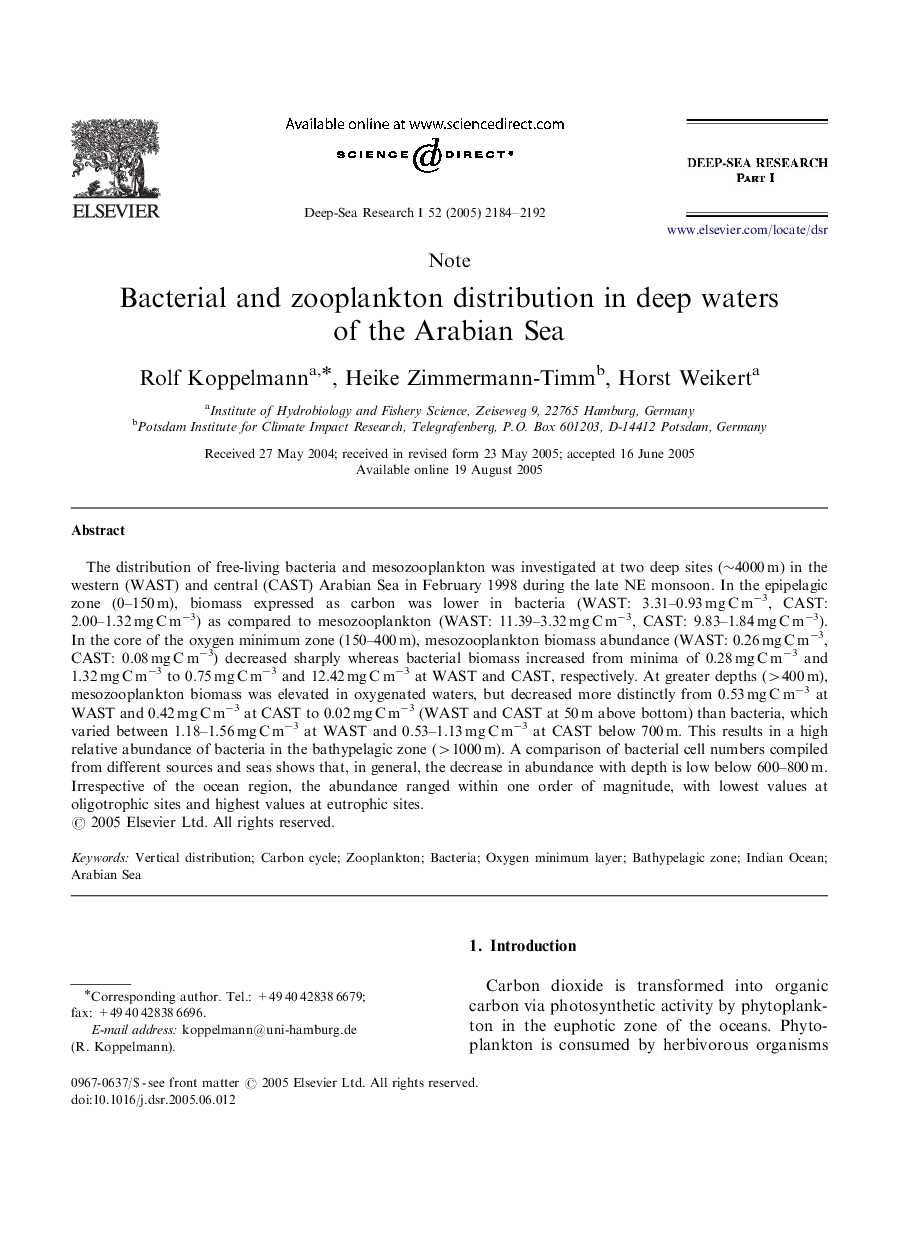| کد مقاله | کد نشریه | سال انتشار | مقاله انگلیسی | نسخه تمام متن |
|---|---|---|---|---|
| 4535436 | 1326106 | 2005 | 9 صفحه PDF | دانلود رایگان |

The distribution of free-living bacteria and mesozooplankton was investigated at two deep sites (∼4000 m) in the western (WAST) and central (CAST) Arabian Sea in February 1998 during the late NE monsoon. In the epipelagic zone (0–150 m), biomass expressed as carbon was lower in bacteria (WAST: 3.31–0.93 mg C m−3, CAST: 2.00–1.32 mg C m−3) as compared to mesozooplankton (WAST: 11.39–3.32 mg C m−3, CAST: 9.83–1.84 mg C m−3). In the core of the oxygen minimum zone (150–400 m), mesozooplankton biomass abundance (WAST: 0.26 mg C m−3, CAST: 0.08 mg C m−3) decreased sharply whereas bacterial biomass increased from minima of 0.28 mg C m−3 and 1.32 mg C m−3 to 0.75 mg C m−3 and 12.42 mg C m−3 at WAST and CAST, respectively. At greater depths (>400 m), mesozooplankton biomass was elevated in oxygenated waters, but decreased more distinctly from 0.53 mg C m−3 at WAST and 0.42 mg C m−3 at CAST to 0.02 mg C m−3 (WAST and CAST at 50 m above bottom) than bacteria, which varied between 1.18–1.56 mg C m−3 at WAST and 0.53–1.13 mg C m−3 at CAST below 700 m. This results in a high relative abundance of bacteria in the bathypelagic zone (>1000 m). A comparison of bacterial cell numbers compiled from different sources and seas shows that, in general, the decrease in abundance with depth is low below 600–800 m. Irrespective of the ocean region, the abundance ranged within one order of magnitude, with lowest values at oligotrophic sites and highest values at eutrophic sites.
Journal: Deep Sea Research Part I: Oceanographic Research Papers - Volume 52, Issue 11, November 2005, Pages 2184–2192